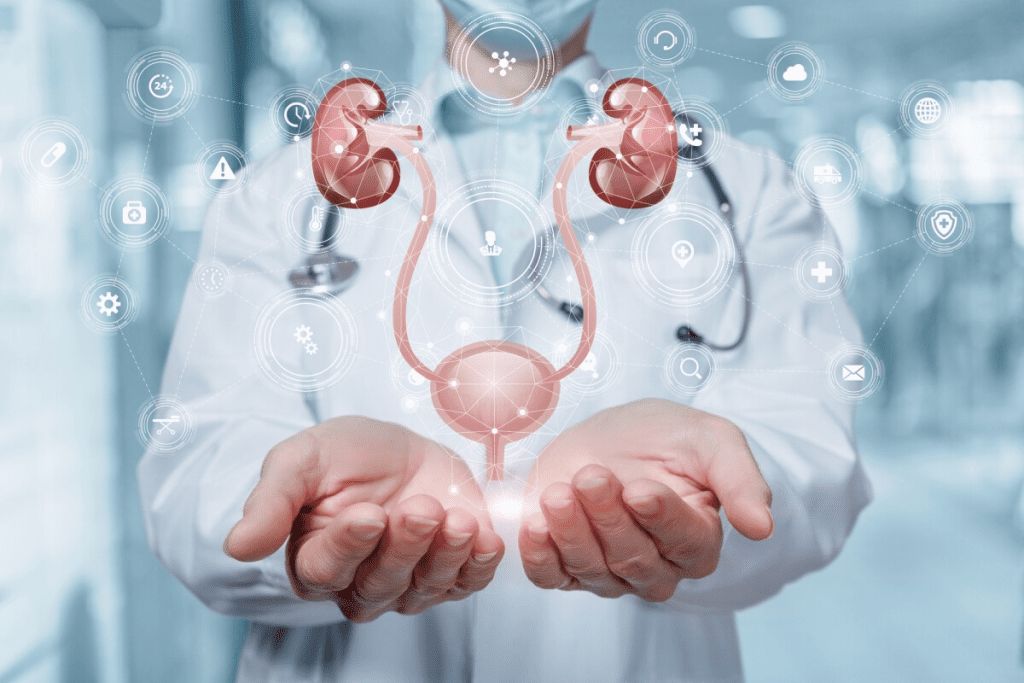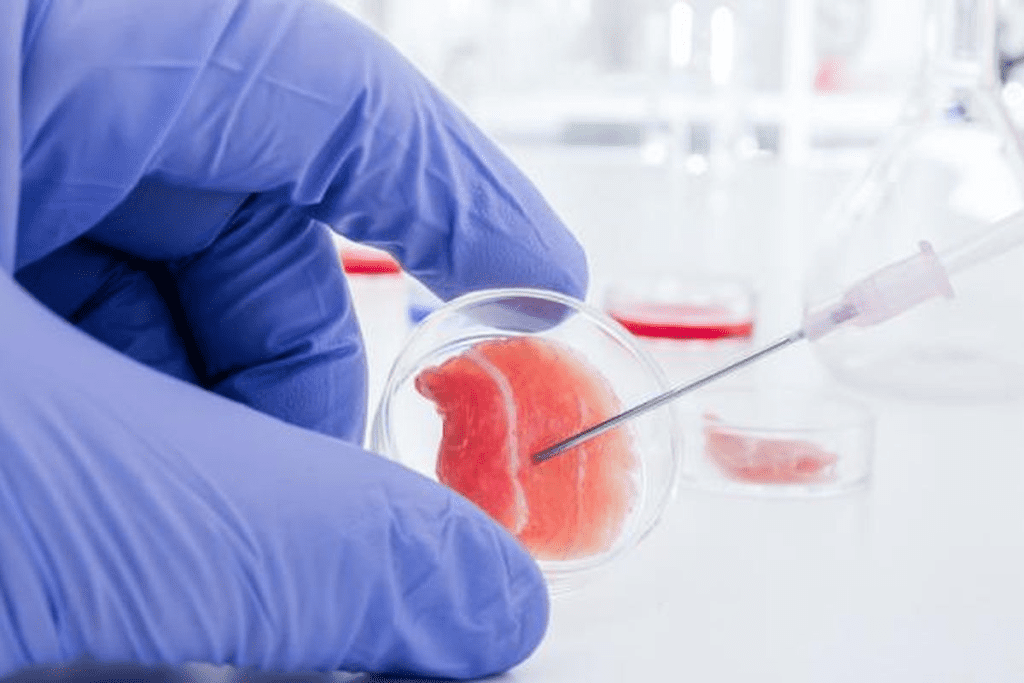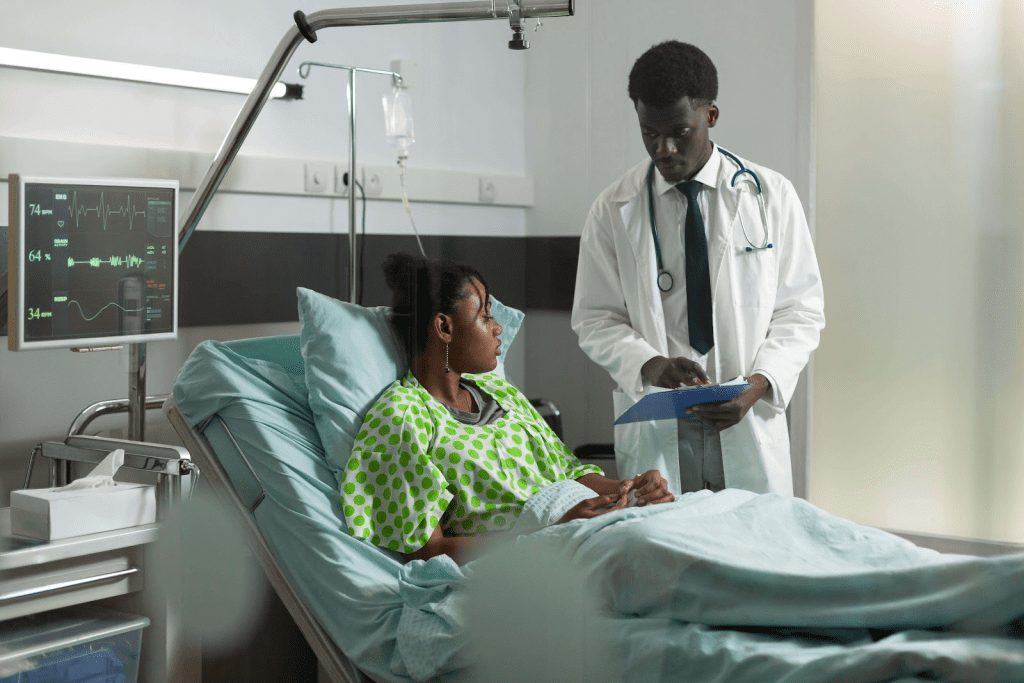Last Updated on October 31, 2025 by
Recent studies have shown that the human bladder organ can repair itself. The urinary bladder tissue quickly regenerates after injury or infection. This is thanks to special cells in the bladder lining.

We are learning that the bladder’s repair abilities are more impressive than we thought. This knowledge brings hope to millions with bladder problems. It could lead to new treatments that use the bladder’s natural healing.Can your bladder repair itself? Learn what is the function of the bladder and its amazing capacity for self-healing and recovery.
The bladder can heal itself, a fact that has amazed many. This ability is key to keeping our urinary system healthy. Recent studies have uncovered how the bladder regenerates itself, giving us new insights into its repair mechanisms.
Research on bladder regeneration has made significant progress. Places like the University of Wisconsin“Madison and Northwestern University are leading the charge. They’ve found that certain cells and the structure of bladder tissue are important for its healing.
The layers of bladder tissue are also vital. The bladder wall has different layers, each with its own role in healing. Scientists are studying how these layers work together to repair the bladder.

Bladder repair is essential for avoiding serious health problems. If the bladder can’t heal, it may lead to chronic infections or surgery. While living without a bladder is possible, a working bladder is key for normal urine flow and quality of life.
Knowing what heals the bladder is important for finding new treatments. Research has found several factors that help the bladder heal, including certain cells and biomaterials. These discoveries could lead to better care for bladder injuries or conditions.
The bladder is key to our urinary system. Knowing how it works and what it’s made of helps us understand its healing powers. It’s a muscular organ that holds urine from the kidneys until it’s time to go.

The bladder’s main job is to hold urine. It can grow to hold a lot, but we usually feel the need to go when it’s about half full. Its muscles help it squeeze out urine when it’s time.
Its structure is vital for this job. The bladder can stretch and then go back to its original shape. This is important for its role in our body.
The bladder wall has four layers, each with its own role. These layers help the bladder stay healthy and repair itself:
The bladder’s layers help it not just store and release urine but also heal itself. Stem cells in the bladder wall, mainly in the urothelium, help fix damaged tissues.
Issues like bladder wall trabeculation can affect the bladder’s function and healing. Knowing the bladder’s structure helps us see how it can heal and how medical help can aid this process.
Sometimes, a hole in the bladder, or vesicovaginal fistula, can happen. This needs medical care. The bladder’s healing depends on the damage and overall health.
Bladder repair involves many types of cells, each with its own role. Knowing about these cells is key to finding new treatments for bladder problems.
Basal cells are vital for the bladder’s ability to heal. They help grow new urothelial cells that cover the bladder. Studies show they can turn into different cell types, helping the bladder fix itself after damage.
Basal cells’ role in bladder regeneration is complex. They help replace urothelial cells and support the growth of other bladder tissues. This makes them a key area for bladder healing research.
Intermediate cells, or intermediate urothelial cells, are also important for bladder repair. They can grow into more mature urothelial cells, helping fix the bladder’s lining.
The ability of intermediate cells to regenerate makes them a focus for bladder repair research. Learning how they work can help us find new ways to help the bladder heal.
Cells from outside the bladder also help with its repair. Stem cells from other parts of the body can join the bladder to aid in healing. They can turn into different types of cells or help create a healing environment.
The role of non-bladder cells in bladder repair shows how complex bladder healing is. More research on these cells could lead to new treatments for bladder injuries and conditions.
The bladder can fix itself after an injury through complex steps. This self-repair is key to getting back to normal. It helps keep the bladder working right and keeps urine flowing smoothly.
Bladder injuries can happen from accidents, surgery, or diseases. Conditions like neurogenic bladder and interstitial cystitis/bladder pain syndrome are common. These issues can make it hard to control the bladder.
These problems can cause a hole in the bladder. This might need surgery or other treatments to fix.
The healing of the bladder goes through several stages:
Cells like basal cells and intermediate cells are key in fixing the bladder.
How long it takes for the bladder to heal varies. Minor injuries might heal in weeks, but serious ones could take months.
Knowing how the bladder heals helps manage expectations and treatment plans. Sometimes, medical help is needed to aid the healing process.
Even though the bladder can heal well, it has limits. Severe damage or conditions like a neurogenic bladder might need extra medical care to keep the bladder healthy.
Discoveries in bladder regeneration are changing how we view urinary health. Recent studies have greatly improved our understanding of bladder repair. This is thanks to innovative research from top institutions.
Researchers at the University of Wisconsin“Madison have made big steps in bladder regeneration. They found that cell migration in the layers of bladder tissue is key to repair. Their work could lead to new ways to help bladder healing.
Northwestern University is leading in biomaterials for bladder regeneration. They’ve made electroactive scaffolds to help tissue growth. These biomaterial innovations are vital for treating bladder wall trabeculation.
While the bladder can repair itself, there are limits. Age, health, and injury severity can affect this. Knowing these limits helps us find better treatments.
The debate on whether the bladder is an organ is ongoing. But it’s seen as a vital part of the urinary system. We must keep exploring to protect bladder health with regenerative medicine.
The field of regenerative medicine is growing fast, bringing new hope for bladder repair. New treatments are being developed to help the body heal itself better.
Stem cell treatments are a big hope for bladder repair. Stem cells can turn into different types of cells, which is great for fixing damaged bladder tissue. Research shows that stem cell therapy can make bladder function better by growing new tissue.
Stem cell therapy for bladder repair uses mesenchymal stem cells (MSCs) or induced pluripotent stem cells (iPSCs). These cells can become different types of cells in the bladder. This helps fix the bladder and make it work right again.
A study in the Journal of Urology found that stem cell therapy can help bladder function. It works for patients with bladder injuries or diseases.
“The use of stem cells for bladder regeneration represents a significant advancement in the field of urology,” says a leading researcher in the field.
Researchers are also working on electroactive scaffolds and biodegradable materials for bladder repair. These materials help cells grow and form healthy tissue.
Electroactive scaffolds are very promising. They give electrical signals that help grow muscle cells in the bladder. This improves bladder function.
The Hedgehog signaling pathway is key to growing new tissue. It helps control how stem cells turn into different cells and repair tissue.
By studying Hedgehog signaling in bladder repair, researchers can make new treatments. These treatments can help the body heal better.
As we learn more about bladder repair, advanced therapies look very promising. They use the latest in stem cells, biomaterials, and signaling pathways. This could lead to better treatments for bladder problems.
We’ve seen how the bladder can heal itself, showing its importance in our urinary system. Its structure, with four layers of tissue, helps it fix itself after damage. Studies have found that different cells, like basal and intermediate cells, help in this healing.
Looking ahead, new treatments like stem cells, electroactive scaffolds, and biodegradable materials are promising. Knowing how the bladder works is key to making these treatments better. The bladder’s layers are important for its healing, and scientists are working to improve this process.
With more research and investment, we can help people with bladder problems. The bladder’s ability to heal itself is amazing. We’re dedicated to learning more about this complex process.
Sometimes, a damaged urethra can heal by itself. But how well it heals depends on the injury’s severity. It’s best to see a healthcare professional for an accurate evaluation and treatment.
A healthy bladder is a muscular sac that holds urine. It has a smooth lining and can stretch to hold urine and then contract to release it.
The bladder wall has four layers. The innermost layer is the urothelium. Then there’s the lamina propria, the muscularis propria, and the outermost layer, the serosa.
Yes, it’s possible to survive without a bladder. But it needs a lot of medical help, like urinary diversion surgery. We’ll talk more about this in our article.
The bladder’s main job is to store urine until it’s time to get rid of it. It’s key to the urinary system.
Bladder wall trabeculation is when the bladder wall gets thicker. This usually happens because of blockages or other issues that make the bladder work harder to empty.
Yes, the bladder is an organ. It’s a self-contained structure that does a specific job in the body.
The bladder can heal itself through different cellular actions. This includes the work of basal cells, intermediate cells, and other cell types.
The urinary bladder tissue has several layers. These include the urothelium, lamina propria, muscularis propria, and serosa. Together, they support bladder function.
Sometimes, a small hole in the bladder can heal by itself. But bigger or more complex injuries usually need medical help to heal properly and avoid problems.
Subscribe to our e-newsletter to stay informed about the latest innovations in the world of health and exclusive offers!